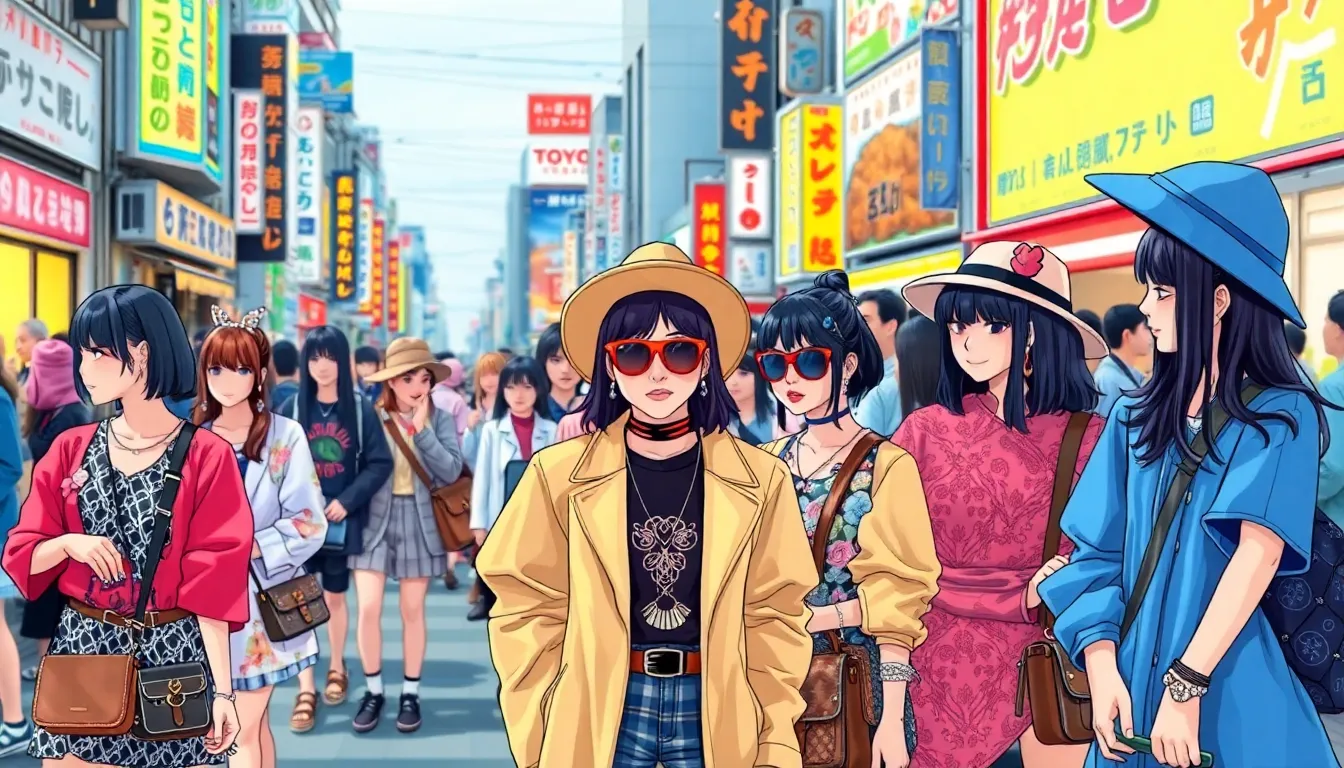Japan’s pop culture is a vibrant tapestry woven with quirky characters, catchy tunes, and jaw-dropping creativity. From the mesmerizing world of anime and manga to the electrifying beats of J-Pop, it’s a playground where imagination knows no bounds. Those who dive into this colorful realm find themselves enchanted by everything from adorable mascots to mind-bending video games that make even the most seasoned gamers question their sanity.
Table of Contents
ToggleOverview of Japan Pop Culture
Japan’s pop culture reflects a rich tapestry of creativity, showcasing an array of unique elements. Anime stands out as a dominant force, captivating international audiences through its vivid storytelling and striking visual styles. Manga, the printed counterpart to anime, has gained a massive following, with millions of copies sold each year, making it integral to Japan’s cultural identity.
J-Pop music also plays a significant role, blending traditional sounds with modern influences. Iconic artists and groups like Hikaru Utada and Arashi have transformed the music scene, attracting fans both domestically and abroad. Diverse genres, from idol groups to hip-hop, contribute to a dynamic music landscape, fostering a vibrant community of enthusiasts.
Charming mascots, known as yuru-chara, represent various regions and organizations, often becoming symbols of local pride. These charming character designs resonate with people of all ages, enhancing regional tourism and engagement.
Challenging video games forge connections among players through intricate gameplay and immersive storylines. Franchises like Final Fantasy and Pokémon exemplify this success, spawning merchandise and expanded media that permeate everyday life.
Japanese film also thrives, with directors like Hayao Miyazaki and Akira Kurosawa gaining global acclaim. Their films, through compelling narratives and stunning visuals, have enriched Japan’s cinematic landscape.
Fashion trends continuously evolve within Japan’s pop culture, with Tokyo’s Harajuku district serving as a hub for innovative styles. Street fashion, blending traditional and contemporary elements, inspires designers worldwide.
Overall, Japan’s pop culture remains a captivating mix of art, music, and entertainment, drawing enthusiasts from around the globe.
Key Elements of Japan Pop Culture

Japan’s pop culture encompasses a wide array of unique elements that resonate globally. Engaging narratives and innovative expressions characterize this vibrant cultural sphere.
Anime and Manga
Anime and manga showcase Japan’s rich storytelling tradition. Engaging characters and intricate plots draw millions into their worlds. Titles like “Naruto” and “One Piece” captivate audiences, while the artistry of manga often influences visual styles in various media. Creators continuously push creative boundaries, ensuring both forms remain relevant and beloved. Consequently, these mediums have paved the way for international success, with conventions and fan events celebrating this cultural phenomenon.
J-Pop and Music Trends
J-Pop evolves with each passing year, blending traditional melodies with contemporary sounds. Artists like Hikaru Utada and Arashi push musical boundaries, gaining massive followings both in Japan and abroad. The genre features catchy hooks, appealing visuals, and elaborate performances that enhance the overall experience. Collaborations with Western artists further expand its reach, creating a diverse musical landscape. Fans often celebrate the influence of J-Pop on social media, contributing to its global presence.
Fashion and Street Style
Tokyo’s Harajuku district serves as a fashion epicenter, where eclectic styles reflect individual creativity. Bold colors, unique accessories, and innovative designs characterizes the street style movement. Influences range from traditional kimonos to global fashion trends, creating a rich tapestry of styles that inspire designers worldwide. Annual events, like Tokyo Fashion Week, showcase emerging talents, emphasizing the city’s role in shaping contemporary fashion. Global interest in Japanese fashion continues to grow, further solidifying its position in the international scene.
Impact of Japan Pop Culture Globally
Japan’s pop culture shaped a global phenomenon, influencing art, music, and entertainment trends worldwide. The creativity permeating this cultural realm captivates millions.
Cultural Exchange and Influence
Cultural exchange thrives through Japan’s pop culture, where anime and manga inspire international adaptations and fan creations. Expressing diverse narratives, these mediums create a level of engagement that resonates globally. Global conventions like Anime Expo and Crunchyroll Expo draw vast audiences, showcasing a strong appreciation for Japanese creativity. Collaborations between Western and Japanese artists often lead to innovative projects, bridging cultural gaps and expanding horizons. Their influence extends into fashion, exemplified by streetwear trends inspired by anime characters and motifs, merging Japanese aesthetics with global styles.
The Rise of Japanese Brands
Japanese brands gain global recognition across various industries, driven by unique pop culture elements. Iconic names like Sony and Nintendo become synonymous with quality entertainment and innovation. The fashion industry sees brands such as Muji and Issey Miyake, reflecting exceptional Japanese design aesthetics, carve out significant markets internationally. Popular franchises, including Pokémon and Hello Kitty, expand beyond merchandise into lifestyle brands, appealing to diverse demographics. Social media amplifies this reach, allowing brands to connect with fans and create vibrant online communities that celebrate their cultural significance.
The Role of Technology in Japan Pop Culture
Technology plays a crucial role in shaping Japan’s pop culture landscape. Innovations drive trends in gaming and enhance the way fans engage with their favorite media.
Gaming Innovations
Gaming innovations continue to influence Japanese pop culture significantly. Developments in mobile gaming, augmented reality, and virtual reality create immersive experiences. Titles like “Monster Hunter” and “Fortnite” showcase cutting-edge technology, attracting millions of players. Console gaming remains popular, with systems from Nintendo and Sony pushing graphics and gameplay to new heights. Players connect through online multiplayer features, generating global communities. Events such as Tokyo Game Show highlight new releases and technological advancements, fostering excitement among fans.
Social Media and Online Communities
Social media platforms facilitate vibrant communities around Japanese pop culture. Fans share their passions on platforms like Twitter, Instagram, and TikTok, leading to dynamic interactions. Various hashtags trend regularly, enabling fans to discover new content and connect with creators. Online communities often host discussions, fan art showcases, and cosplay events. Platforms like Crunchyroll and DeviantArt also offer spaces for sharing original content, reinforcing connections among global enthusiasts. These digital interactions amplify the reach of Japanese pop culture across borders, engaging wider audiences.
Japan’s pop culture continues to enchant audiences worldwide with its innovative spirit and diverse offerings. From the captivating worlds of anime and manga to the infectious rhythms of J-Pop, it showcases creativity that transcends borders. The influence of Japan’s unique cultural elements is undeniable as they inspire global trends and foster connections among fans.
As technology evolves, so does the landscape of Japanese pop culture, creating immersive experiences that keep enthusiasts engaged. With each new generation of artists and creators, this vibrant culture will undoubtedly keep shaping the entertainment industry and inspiring future generations. Japan’s pop culture is more than just entertainment; it’s a dynamic force that celebrates imagination and community.



